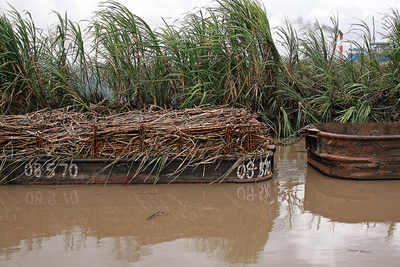Economic Impacts of Climate Change in the Caribbean

|
| Foto: KennardP, Flickr |
Agriculture accounts for a tenth of GDP and nearly a third of all employment in the Caribbean. Owing to climate change, however, this could drastically change by 2050, says the report The economics of climate change in the Caribbean , issued by ECLAC as the third volume of the Caribbean Development Report . The report assesses the cost of climate change in five sectors –agriculture, coastal and marine, energy and transport, health, and tourism- across nine countries of the subregion.
.Agriculture in the Caribbean, whether it be for domestic or export markets, still often uses labour-intensive farming methods that are dependent on rain-fed systems. Fruits, cassava, and nutmeg are some of the crops grown for domestic consumption while those traditionally grown for export include bananas, sugarcane and coffee. An assessment of the agricultural sectors in Guyana, Jamaica, Saint Lucia and Trinidad and Tobago concluded that while changes in temperatures and precipitation due to climate change would be marginal, these slight changes will still have a significant impact on agriculture, and especially for small-scale farmers.
Given the small economic size of these countries, increased frequency and intensity of extreme weather, such as hurricanes, floods and droughts, due to climate change, are especially a cause for a concern. In addition to increased soil erosion due to hurricanes and floods, drought could lead to greater incidence of fires as well as lower agricultural yields. Since coastal plains provide much of the farm land, rising sea-levels could increase salinity of groundwater, making it difficult to grow crops. Within the Caribbean, earnings from banana exports could decline by 5.1 per cent while that from fisheries could fall by 20 per cent by 2050 as a result of climate change. Agriculture in Guyana alone could suffer cumulative losses of more than US$ 1.9 billion over the period.
Considering the economic and social costs of climate change, ways to minimize its impacts need to be found. As the Caribbean accounts for less than 0.1 per cent of total global greenhouse emissions, adaptation measures, which focuses on ways to adjust to the anticipated impacts of climate change, may be the only viable option. Given the importance of water in agriculture, irrigation that conserves use of water as well as on-site water storage facilities could reduce dependency on rain-fed systems. Improved research and development could lead to introduction of plant varieties that are more resistant to drought, salinity and pests, as well as increased crop diversification. Improved information flow among researchers, farmers and governments as well as investment in infrastructure such as sea walls may also be critical.
By implementing some of the proposed adaptation measures, countries in the Caribbean may be able to minimize the impact of climate change on their economies and, possibly even find opportunities to further advance their development.
More SUBREGIONAL/OFFICES
Biotechnology Overview of the
Argentinian Province of Córdoba
| The report assesses the cost of climate change in five sectors –agriculture, coastal and marine, energy and transport, health, and tourism- across nine countries of the subregion. | |
| Given the small economic size of these countries, increased frequency and intensity of extreme weather, such as hurricanes, floods and droughts, due to climate change, are especially a cause for a concern. | |